We’ve played a lot of Metroidvanias here at PSC, most recently the thoroughly decent Trinity Fusion, but we’ve also played some downright ropy efforts. We’ll spare them their blushes but it does seem like this is the go-to option of the moment. Accordingly, we were a little surprised to note that the latest Prince of Persia game, in this case subtitled The Lost Crown was also a Metroidvania.
Jordan Mechner came up with the original Prince of Persia first published in 1989 by Broderbund on the Apple II and ported to twenty plus systems, last seeing the light of day on Android in 2012. Ubisoft acquired the rights in 2001 upon which they began work on the 2003 3D platformer The Sands of Time that this reviewer played on Gamecube. There were a further two releases; Warrior Within and The Two Thrones; making a trilogy of sorts, and a follow-up in 2010’s The Forgotten Sands.
We consider that one the last mainline series release, though you could make a case for the Assassin’s Creed series being a spiritual successor of sorts. That series star has faded a little in the interim period so we guess Ubisoft decided to reinvigorate Prince of Persia with this somewhat unexpected installment. There’s also a forthcoming Sands of Time remake that we look forward to, if tentatively.
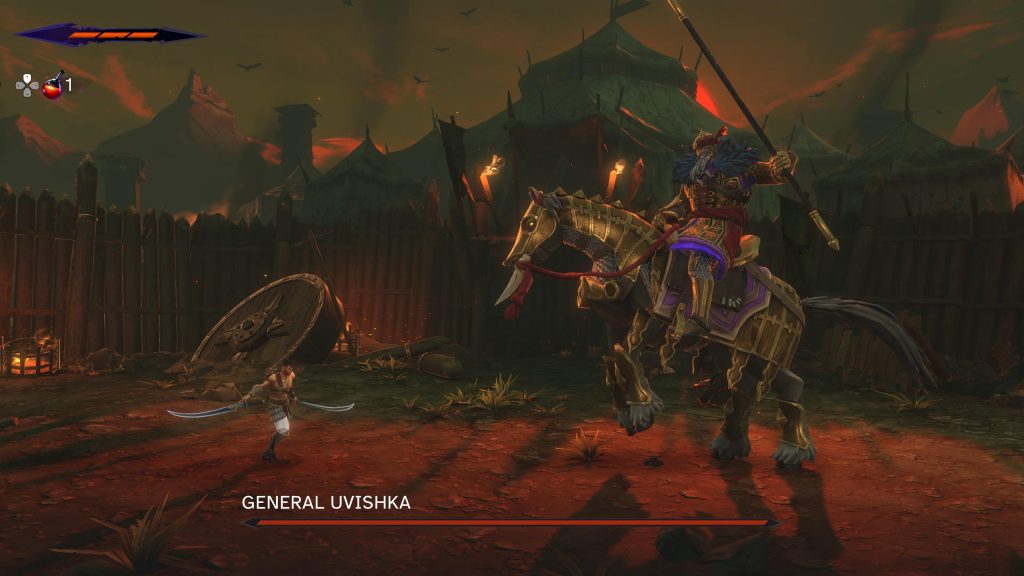
The Lost Crown begins with bombast as it sets the scene in Persia of yore. Your player character Sargon is one of seven immortals who leap into action when the occasion arises, think the Vought Seven without the corruption and carefully curated social media presence. The crisis of the day is when the marauding Kushans attack from the east. You’re introduced to the movement and combat system by fighting their general, the bearded Uvishka.
After you’ve seen him off, you’ll be subjected to what feels a little like death by cutscene as the narrative is laid on thick and fast. You’ll be forgiven for feeling a little overwhelmed, we certainly did. After a while, the apparent villain of the piece does the dirty and rides off on horseback. You’re then introduced to the well implemented parry system and the Athra gauge. The parry is all about timing.
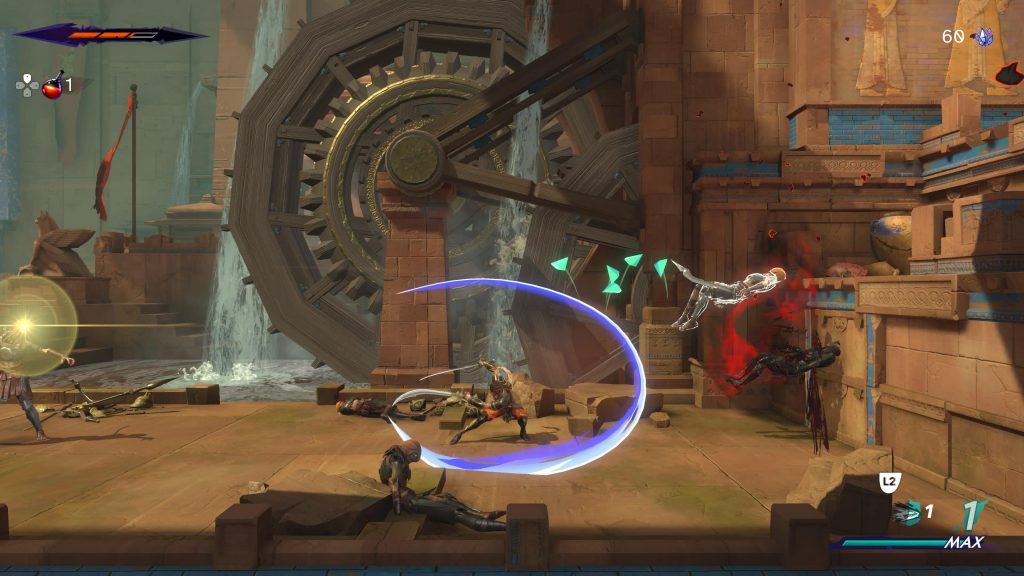
It’s not as acute as say, Metal Gear Rising: Revengeance, but it’s still possible to mess up the timing against the most agile enemies. Yellow power attacks can be countered with a powerful one hit attack that goes a bit anime with a short cutscene flourish. Red attacks can’t be parried, with complete evasion required. This approach is best employed against the smaller characters, though in the case of one mid-game boss, you’ll come unstuck quickly.
Soon after you’ll get into the proper platforming that we’re happy to say is among the best we’ve encountered in any Metroidvania. You’re encouraged to go off the beaten track frequently with a handy audible alert when a secret is in the area you’re in. Most of the time it’s the in-game currency that you buy upgrades with, though almost as often it’s lore items that flesh out the backstory.
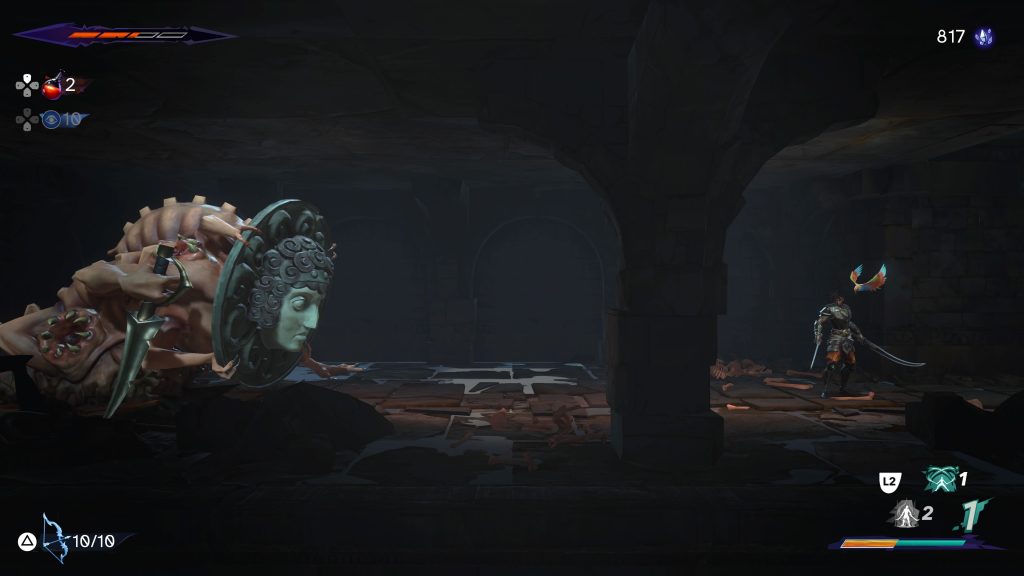
You’ll soon realise the scope of the map is vast, Ubisoft’s budget knowing no bounds in that respect. The first three or four sub-areas are as big as the maps in some indie games we’ve played, put it that way. As is often the case, you can make your way into areas where you find your progress gated due to doors being blocked by an ability you’ve yet to unlock.
Typically these are unlocked by defeating a boss and getting a special feather, then it’s game on. Handily, the game lets you take screenshots at places you’re stuck at and pin them to the map so you can revisit them once you’ve gained the skill to do so. It’s a handy quality of life improvement that others could learn from.
As you progress you’ll find trees that allow you to swap out amulets and your special attack. Ubi missed a trick by not making them the fast travel points if we’re honest. They’re a de-facto save point anyway, so it’s a bit baffling that fast travel points are yet another separate shrine. These aren’t quite so frequent as the trees though, so perhaps that’s why.
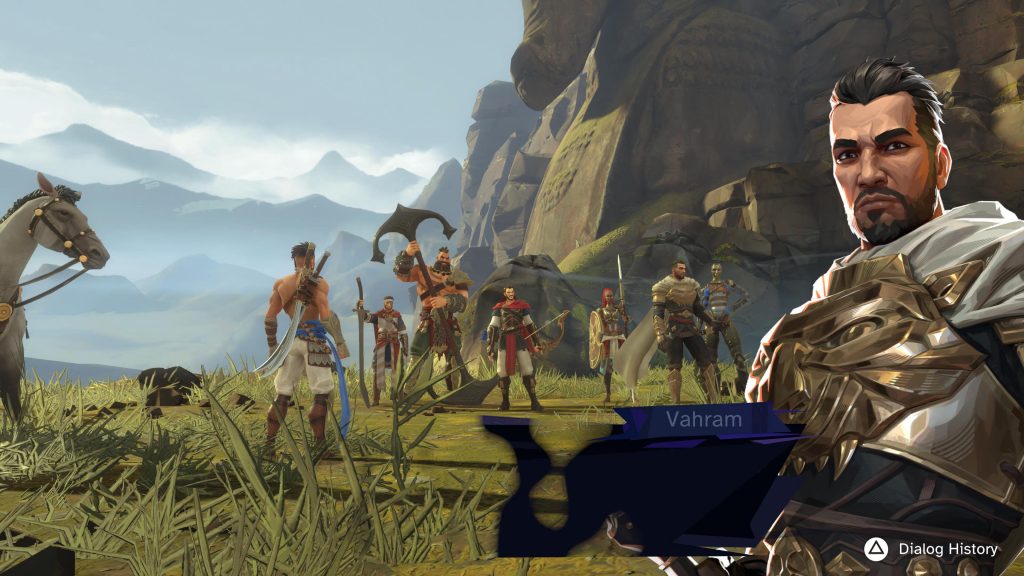
The boss fights in the early stages of the game are fun enough, although one amounts to little more than window dressing to advance the plot as you’re set up to fail no matter how proficient you’ve become by this point. Our undoing came when we faced the forest queen and simply haven’t got past her. It’s an entirely arbitrary roadblock that has halted our progress altogether and makes us wish for dynamic difficulty like in the previously mentioned Trinity Fusion.
We’ve attempted this particular boss at least forty times and it’s galling that the game doesn’t make any concessions at all to help you see more of the storyline. The most galling thing is you’re actually penalised by dying so we spent all our remaining currency on power-ups we didn’t necessarily need so as not to lose it all. It’s like local government spending their budget before the end of the financial year. It all feels a bit punitive.
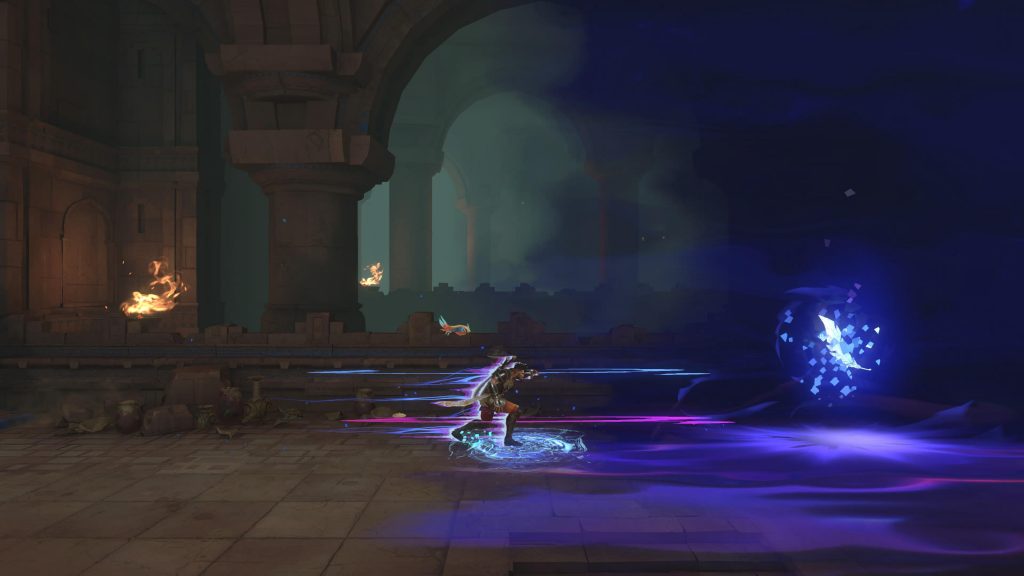
What makes the boss fight in question all the more annoying is that we’ve pretty much exhausted every other option for progress otherwise. The boss has three distinct phases, each of which are tough enough in isolation. We’ve worked out what to do, but our execution is lacking and we simply can’t get past the third phase. Our usual method of playing something else in the meantime and coming back to the game for another crack bore no fruit, so it is at this point we sadly came up short and had to call it. It’d be churlish to mark down The Lost Crown for this though.
It’d be nice to have the opportunity to mulligan or at least change the difficulty somewhat dynamically, otherwise we’re in danger of playing this every six months like we did Dark Souls on 360. In that we revisited areas previously well-trodden, die repeatedly and sack if off until we forgotten why we’d stopped playing. Then we’d play again, only to remember why we abandoned the game in the first place. The Lost Crown is too good to suffer that fate, though it’s in danger of doing so for this player.
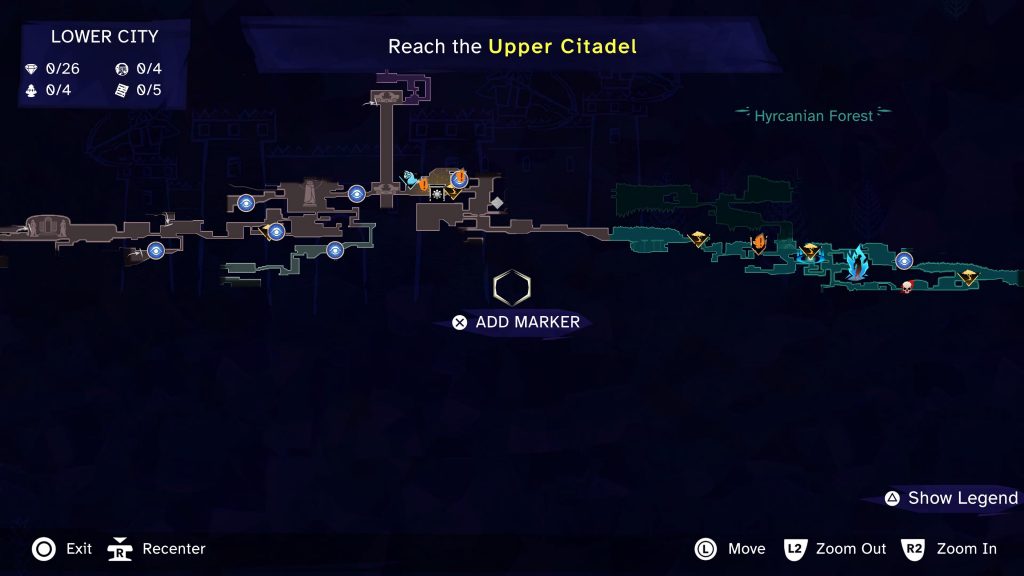
One thing that we did find jarring was the voiceovers were a bit out of place. One old guy in particular was depicted as a wizened ancient geezer yet sounded like Richard Ayoade, certainly not old. We get that the studio that did the voiceover was probably inhouse but it wouldn’t have taken much to make a little more effort in that respect.
Another thing that we found a bit out of place was the generic font style used in the menus and the subtitles. It gives The Lost Crown the feel of a corporate product rather than something crafted with love. The devs clearly aped the better examples of Metroidvanias in many ways, but the sense of place is thrown off by little details like this.
The music is all very well done and mystical with distinctive Persian flavour, just as the sound effects are good, including those that emanate from your controller speaker. Just as we’d expect from a multiformat game though, there’s precious little use of any haptic feedback. It’s not like Ubisoft don’t have the resources to go to town on using the API that Sony demonstrated so well with the glorious Astro’s Playroom, and in a game of this polish it really feels like a missed opportunity.
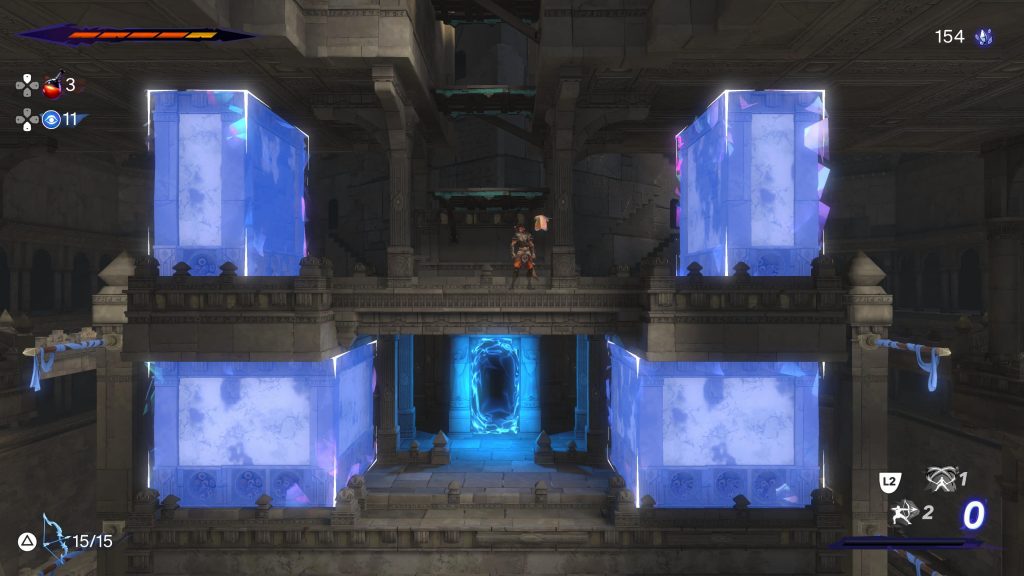
In our fruitless search through the menus for a difficulty slider, we did notice the accessibility options include platform assist as well as a guided quest to nudge you towards your next objective. These are welcome additions but sadly aren’t any help when all they ultimately do when you’ve exhausted all other options is to direct you to the area you’re already stuck on or to a gate as yet unopenable.
In conclusion, Prince of Persia: The Lost Crown is a great Metroidvania that could learn a few lessons from its indie contemporaries, namely dynamic difficulty when you face the tougher bosses. We’re not inclined to spend our already precious free time getting knocked down again and again, only to realise that we aren’t having fun anymore. The voiceovers are a bit out of place, especially when you’re supposedly talking to an old geezer who sounds like he’s in his early forties. We’ll try to persevere and get past the damn boss we’re stuck on, but we fear we won’t. Oh for an invincibility cheat. Your mileage will no doubt vary, but we’ve seen about as much as we’re likely to see otherwise.
+ Vast map with many paths
+ Collectibles a plenty
+ Nice accessibility and quality of life improvements
- Voiceovers are a bit bland and occasionally out of place
- Dynamic difficulty would be a definite plus

